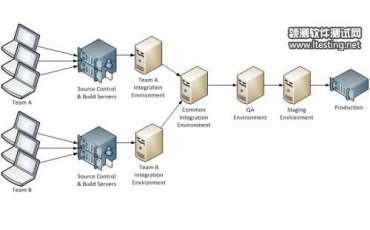by David McNab <david@fre.net.org.nz> here is a link to the original page
Introduction
System Requirements
Installation Procedure
What is Linux?
Introduction Full GNU/Linux Desktop installed in 20 minutes flat!
No more excuses for running W--dows! Knoppix is aremarkable Linux 'demo' distribution, in that it can run totally from aCD, without disturbing any existing software or disks on the systemit's running on. Even better, Knoppix can auto-detect hardware as it starts up, and does quite a good job of configuring this hardware. And still better, Knoppix is chock-full of the best desktop softwarewhich GNU/Linux has to offer - office software, games, productivitysuites, software development tools, multimedia - you name it! After seeing a Knoppix demo, many users decide that they'd like tohave Knoppix permanently installed on their system. This HOWTO gives asimple step-by-step guide to putting Knoppix on the hard disk, with theadded bonus that it will run faster from then on. This guide covers a couple of obvious points which are strangelymissing from the Knoppix website, and will help you to go from firstboot to a fully set up GNU/Linux desktop in 20 minutes flat!
System Requirements To install and run Knoppix on your PC, you'll need: - Pentium-class processor, preferably 300MHz+
- 64MB RAM
- A spare partition on your disk, min 3GB
- (of course) a Knoppix CD
Installation Procedure To get Knoppix installed onto your hard drive: - Boot the Knoppix CD.
- When the boot prompt comes up, choose your language.
Most of us speak English, so we'll type: boot: knoppix lang=en then press ENTER (you don't type the 'boot:' part, of course)
- Wait till the system is fully launched, including the KDE desktop
- Press CTRL-ALT-F1, to get a root console. You should see a shell prompt
- Type: knx-hdinstall
- Follow the guided installation menus. This will include:
- Creating a Linux partition (at least 2.5GB
- Creating a Linux Swap partition (at least 256MB)
- 'Mounting' the Linux partition as root
- Initialising the swap partition
- Copying all the required files (automatically)
- Setting up networking
- Setting passwords
- Setting up the bootloader (Note: take care with this stage -it could render your system incapable of booting into Windows. If youreally need Windows, then it might be a good idea to set up GRUB Bootloader witha 'chainloader' entry, so that you can dual boot. Working this out isan exercise left to the reader - there are too many possible scenariosfor me to cover in this short guide. Also see man grub and the files in /usr/share/doc/grub)
- Rebooting (without the CD)
- When you've rebooted Knoppix from your hard disk, click on the KDE Control Centre icon in the launcher at the bottom of the screen (icon of a colour monitor with a card in front of it)
- Within the Control Center, click on Personliche Einstellungen
- Click on Land und Sprache
- Choose the locale and language of your choice
- Click on Andwenden at bottom of that window
- Close and restart the Control Center
- Click on Peripherals, then Keyboard, and choose your preferred keyboard layout (which will probably be US.English. Click OK and close the window
- Press CTRL-ALT-F2 to get to the root console, and log in as root (using the password you chose when you ran the installer)
- (Optional) - type apt-get update (followed by ENTER). This will update your list of available packages, and takes about 5-10 minutes.
- Hey, presto, you've got a fully installed GNU/Linux desktop
From here on in, you'll probably want to fine-tune a few things, setup themes, backgrounds etc. But most of the hard work is already donefor you! And lastly, note that Knoppix is based on Debian,which is arguably the finest GNU/Linux infrastructure available. Tolearn more about your system, and how to add/change/remove software, goto the Debian website and read the documents. If you get really stuck,start up X-Chat and log into irc.debian.org or irc.openprojects.net and join channel #debian. That is one busy chat room, with Debian Linux experts present 24/7, willing to help.
What is Linux? Linux, or more correctly, GNU/Linux, is an operating system thatruns on most known types of computers, including (of course) thepopular Intel-based PCs that most people use, and Macintoshes, right upto large mainframes and supercomputers.
GNU/Linux is sweepingrapidly throughout the computer world, from individual users through tosmall companies, large corporations and government departments.
GNU/Linuxis based on Open Source software - software for which the source codeis freely available. The license conditions for OSS allow you to viewand modify the software, and share your changes freely.
Amongst the many advantages of OSS are:
- Price - total cost of ownership of GNU/Linux based systems is lessthan half that of proprietary systems like Windows. Often, it's even aquarter or less.
- Security - GNU/Linux systems are far less vulnerable to crackers than proprietary systems.
- Versatility - with GNU/Linux, you have the freedom to mix andmatch software as you choose, also to change any software as you seefit.
- Transparency - with the source code available, you cansatisfy yourself that your programs are not doing anything undesirablewithout your consent (not always true for proprietary Windows systems -for example, Windows keeps secret records of everything you do on yourcomputer)
- Empowerment - with GNU/Linux, no company can gradually encroach onto your rights and privacy.
GNU/Linuxhas advanced to the point where most moderately-skilled computer userscan convert their systems to GNU/Linux, without losing any of their oldWindows-based data.
There are thousands of excellent websites relating to GNU/Linux around the world. I list just a few of them here:
- New Zealand Open Source Society - www.nzoss.org.nz
- New Zealand Open Source Vendor Group - www.openz.org
- Linux.org
- Linux for Newbies
This page is CopyLeft by David McNab <david@freenet.org.nz> - please feel free to link this page or copy it elsewhere |





